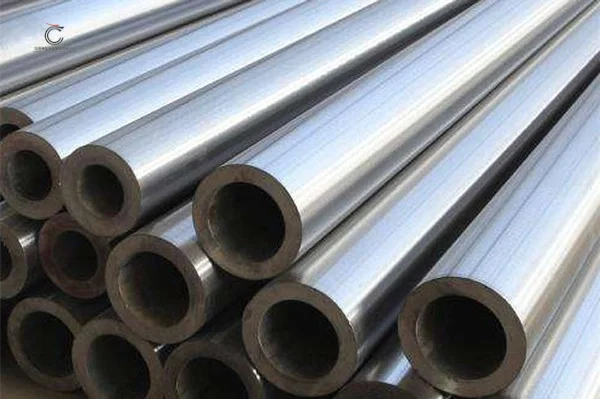Low carbon steel pipe introduction
What is low carbon steel pipe?
Low carbon steel pipe is a steel with carbon content less than 0.25%, which is soft due to its low strength and hardness. It includes most parts of ordinary carbon steel and high quality carbon structural steel, mostly without heat treatment for engineering structures, part of carburizing heat treatment and other mechanical parts needing wear resistance. The annealed organization ferrite and pearlite of low-carbon steel pipe is to reduce its strength and hardness, ductility and toughness. Therefore, the cold formability is good, and can be cold formed by curling, bending, stamping and other methods. Low carbon steel pipe like this has good weldability. Mild steel with carbon content from 0.10 to 0.30% can easily accept various processes such as forging, welding and cutting and is commonly used in manufacturing.

Application treatment of low carbon steel pipe
Plain mild steel pipe is used to produce building components, containers, tanks, furnaces and agricultural machinery. High quality mild steel pipe is used to make dark red products such as automobile cabs and hoods; it can also be rolled into bars and used to make mechanical parts with strength requirements. Low carbon steel tubes are generally not heat treated before use, and are treated by carburizing or cyanidation when the carbon content exceeds 0.15%, and are used for shafts, bushings, sprockets and other parts that require high surface temperature and good wear. Due to the low strength of low carbon steel, the use is limited. Properly improve the carbon content of manganese and add trace vanadium, titanium, niobium and other alloying elements, can greatly improve the strength of steel. If you reduce the carbon content of steel and add a small amount of aluminum, and a small amount of boron carbide and other forming elements, you can get ultra-low carbon steel set high enough strength, and maintain good ductility and toughness.
Process of low carbon steel pipe
Low carbon content of low carbon steel pipe has very low hardness and poor machinability, normalizing treatment can improve machinability. Low carbon steel tubes tend to have a greater tendency to age, both quenching aging and strain aging. When rapi dly cooled from high temperature steel, ferrite scraping carbon, nitrogen saturation, it also slows the formation of iron carbide at room temperature, which reduces the strength and hardness of the steel, ductility and toughness, a phenomenon known as quench aging. Ageing can occur even without quenching and low-carbon air cooling. The ferrite that produces a large number of deformation dislocations in mild steel comes from the elastic dislocation interactions of carbon and nitrogen atoms, which regroup around the dislocation line. Such a combination of carbon, nitrogen atoms and dislocation lines is called a Coriolis old air mass (Ke lop air mass). It will increase the strength and hardness of the steel while decreasing the ductility and toughness, a phenomenon known as strain aging. There is a greater risk of plasticity and toughness during deformation than quench-aged mild steel pipes, which have distinct upper and lower yield points on the tensile curve. As elongation occurs at the yield point until the end, deformation occurs due to surface unevenness, forming folds on the surface of the specimen, called Ludes bands. That is why many stamped parts are often scrapped. There are two methods to prevent it. One is the highly pre-deformation method. Pre-deformed steel stamping parts will produce Lourdes band after being placed for a period of time, so pre-deformed steel stamping parts should not be placed for too long before. In addition, aluminum or titanium is added to the steel to form a stable compound with nitrogen to prevent the formation of air mass due to aging caused by Coriolis deformation.
Cangzhou Shenlong Pipe is the world's premier supplier of carbon steel pipes, mild steel pipes, seamless pipes, welded pipes, galvanized pipes, casing and steel fittings.






